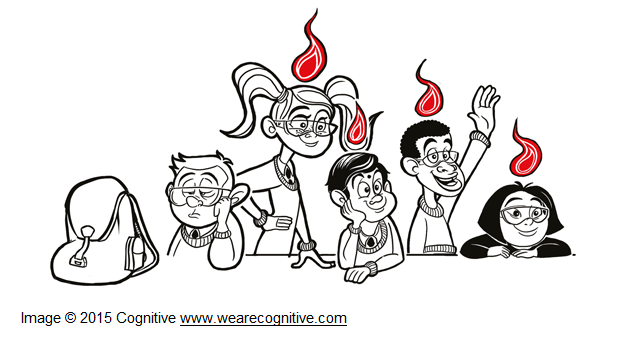Many young people see science as irrelevant to them, as the academic nature of much of the science taught in secondary schools appears to be geared towards those who are going to end up wearing white coats in labs or being doctors. Or at least that’s how it can be perceived, not just by young people, but their families as well.
Much has been tried to make science exciting in schools, putting the wow factor into lessons, to garner interest. However, the research shows that, actually, most young people do find science interesting. What they don’t see is how it relates to them. So, we should stop putting lots of effort into making science fun, and more time and thought into making it relevant.
The Enterprising Science project
The Enterprising Science project, funded by bp and developed by a team of researchers from University College London, King's College London and the Science Museum, supported by STEM Learning, has looked at how teaching can develop the science capital of young people, and potentially their families as well.
Science Capital is based around theories of social capital. The more of it you have, the more likely you are to believe that ‘science is for me’, which can lead to engaging better as well as taking science education further. The key part of this approach is not to change the content of what is being taught (schools are far too time pressured with examinations to deliver additional content), but to tweak how they approach the teaching of what they already do.
There are three key things that teachers can do to improve the science capital of young people:
Broaden what counts as valued science experience in the classroom
This means bringing young people’s experiences of the everyday into lessons and making the science relatable.
Personalising the content and giving local context where possible
For this to work teachers need to know their students well, but this can be done over time, so that over, say, a year, all students feel that they have been personally engaged with the science content at some point. Also by using places, ideas and objects that students know about and encounter regularly, they can relate science to themselves better.
Developing the dimensions of science capital
There are eight dimensions of science capital, which teachers can approach to engage young people and, if well thought out, their families as well. This last part is essential where young people come from backgrounds with little or poor understanding of science and how it can help with a future career, as well as having a greater understanding of the world around them.
These broadly fall into four groups - what you know, how you think, who you know and what you do.
The dimensions are:
- Scientific literacy
- Science-related attitudes, values and dispositions
- Knowledge about the transferability of science (that science 'opens doors' to many careers)
- Science media consumption
- Participation in out-of-school science learning contexts
- Family science skills, knowledge and qualifications
- Knowing people in science-related roles
- Talking about science in everyday life
The results
STEM Learning worked intensively with a group of teachers to develop their approaches to science capital. The way it works is incremental and shows a long-term increase in not just students’ engagement, but positive behaviours towards science, increased understanding of how science links into STEM careers, and that science is important in all of our lives. It’s not a one-off intervention, but a changing approach to teaching the content - as one teacher put it: “It becomes a habit; the more you do it, the more natural it becomes.”
After the trialling period, the teaching pack was developed which enables teachers to support themselves through their own CPD, in addition to the face-to-face events run at the National STEM Learning Centre in York and across the network of science learning partnerships, as well as embedded as an approach throughout science courses. It also links closely to the STEM Ambassadors programme, to allow teachers to draw on expertise from outside the classroom.
The results have been superb - it’s a change of mindset for teaching, rather than an entirely new specification. It fits in well with other activities, such as the BEST project for determining misunderstanding and misconceptions. It has helped teachers understand more about their own students, as well as promoting a much more engaged learning environment, not just for those who traditionally may have considered science as being ‘for them’, but for everyone.
As part of the acknowledgement of this, on Tuesday 9 July, bp was given a Highly Commended award at the Responsible Business in Society awards in London. Of all the innovations in science teaching, the science capital project is one of the most promising in terms of the approach to teaching and learning, supporting those young people who otherwise would not consider that science had much to offer them.


